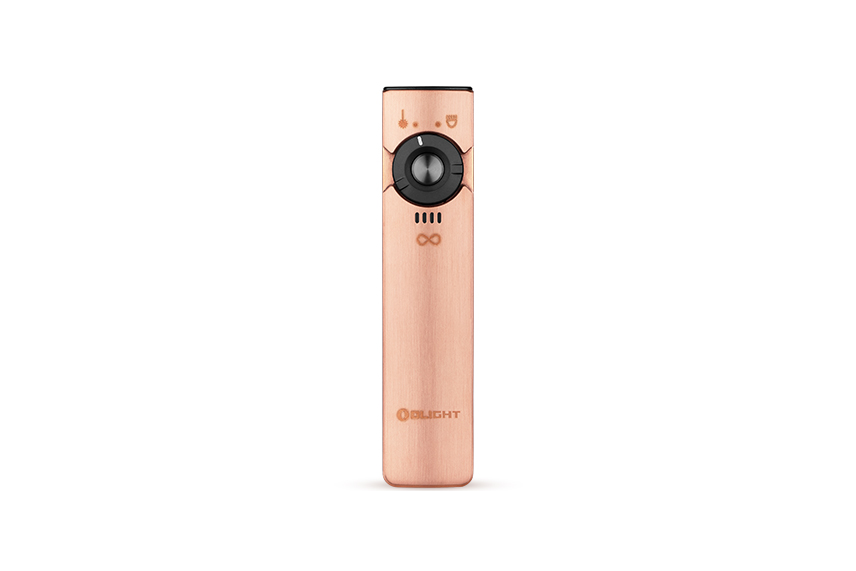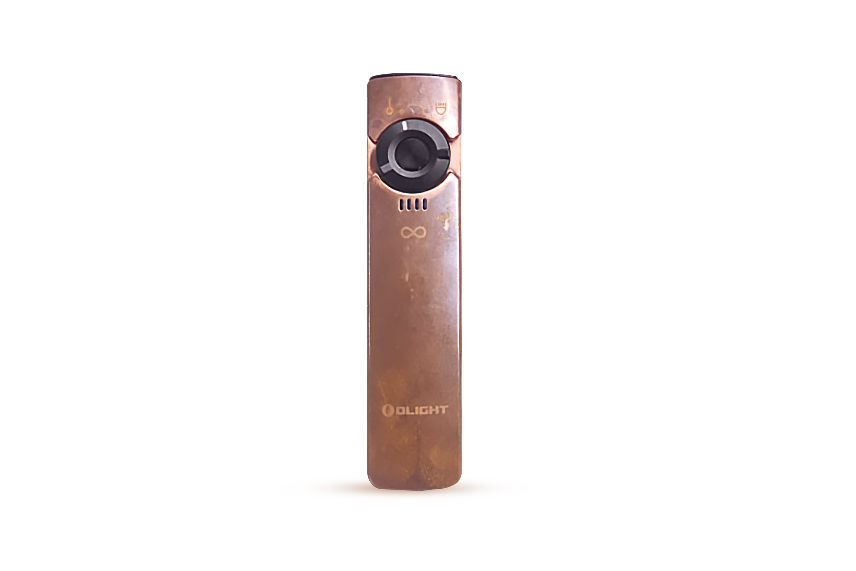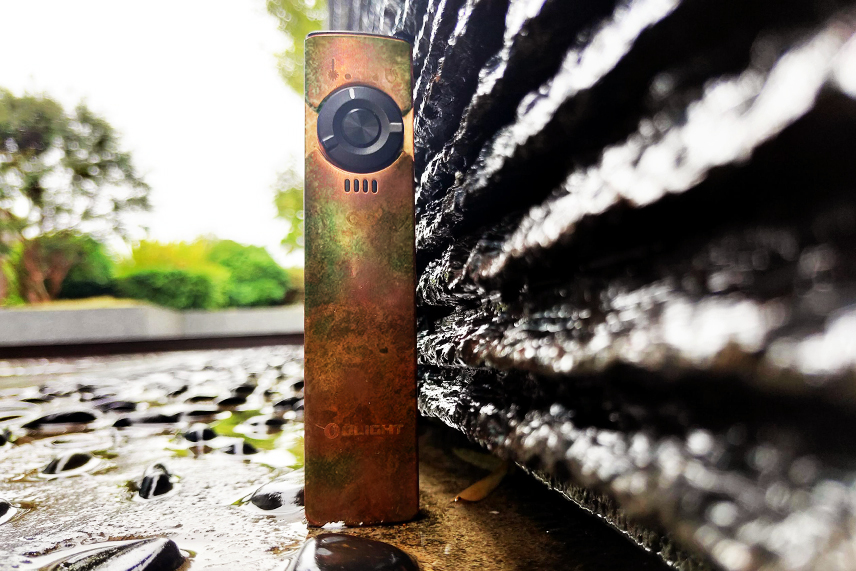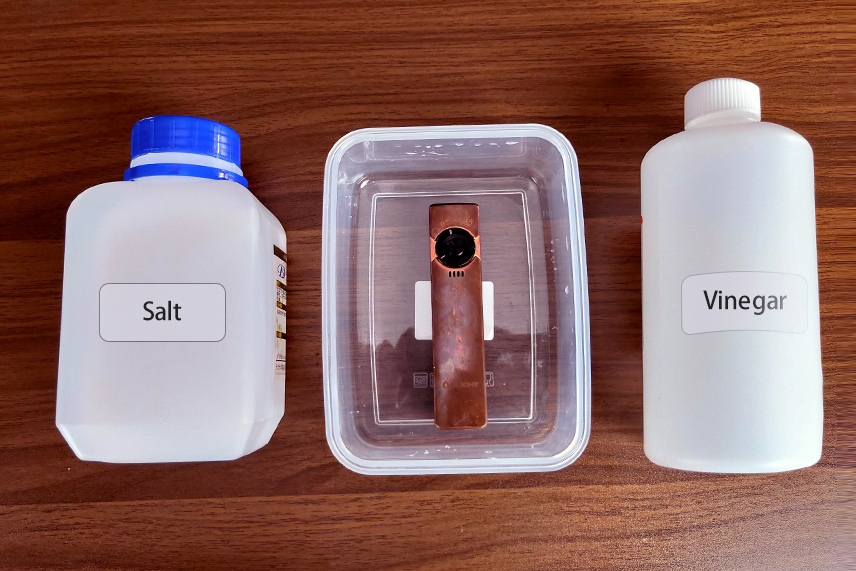Copper is one of the metals used by very early human beings. Things made of copper are very widely used around the world even today. Many pieces of artwork, utensils, even small tools, and even flashlights are made of this prized material. Olight, catering to the desires of Ofans, has produced many different models of flashlights made of cooper over the years. During this year’s Black Friday sale, we even launched a seasonal edition copper flashlight, the Eternal 3, based on the fan favorite, flat EDC flashlight, Arkfeld.
Items made from copper are highly valued, not only because of its own characteristic of durability, but also the beautiful and unique patina it develops.

What Is Patina?
Patina, according to the Oxford English Dictionary, is a green, black, or brown layer that forms on the surface of some metals. Patina is a protective layer generally formed gradually when metals such as copper are exposed to atmospheric conditions. Patina can also be forced, which means encouraged to occur more quickly than it naturally would.
Two Methods of Encouraging Patina Formation
Patina is a chemical process at its core. There are the two ways to help make your copper flashlight develop patina:
1.Natural Copper Patina
In order to hasten the formation of natural copper patina, simply expose your copper flashlight to the air. Since there are moisture and different elements contained in the air, the copper surface will oxidize and slowly begin to turn brown or darken compared to its original color. Natural patina requires time to form, and it generally develops into a mild and natural glossiness. Especially if you have handled your copper flashlight extensively in addition to exposing it to the air, the oils and other effects of human hands will produce patina with an even more attractive feel and enhanced glossiness.

2.Forced Copper Patina
When we talk about forced copper patina, we mean patina created using chemical means to hurry the process. A simple vinegar and salt mixture, for example, can create a great looking forced patina quickly on your copper flashlight. With forced patina, you can always control the outcome to some extent, just like an experiment in chemistry class, because you can decide when and how to start and stop the process. It is a bit of an art form to create a forced patina Different people might create very different, yet equally beautiful, copper patina during the process of forced patina.

Forced patina can also be influenced by humidity, temperature, and the presence of different chemicals in the air. Any patina can change over time if left unprotected. Therefore, sealing your patina at the point when you consider it ideal is very important. Using wax, lacquer, or a proprietary product designed for the purpose can help prevent it from changing or developing further.

There are several ways of forcing patina on your copper flashlight:
1.Seal your copper flashlight with fresh, hot hardboiled egg pieces in a plastic bag or container.

2.Soak your copper flashlight in a mixture of white vinegar and salt. (This tends to create a blue or green patina.)

3.Cover your copper flashlight in crushed potato chips soaked with white vinegar.

4.Spray your copper flashlight with saltwater and seal it in a plastic bag or container.


Please kindly note that the length of time you expose your copper flashlight to patinating substances and your choice of patinating substances will greatly influence the final patina color and amount. Longer exposure may deepen the color. We also caution you to please pay attention to your safety while forcing patina, and we encourage you to practice on a scrap piece of copper if possible. Though the copper alloy, and therefore the resulting patina, will likely vary from that of your copper flashlight, it will give you a good feel for the process and provide some confidence inspiring experience.
Thus, what is your favorite way to encourage patina to form on your copper EDC items? How about ways to protect that great looking patina once you have it? We welcome you to share with us in the comment area below.





